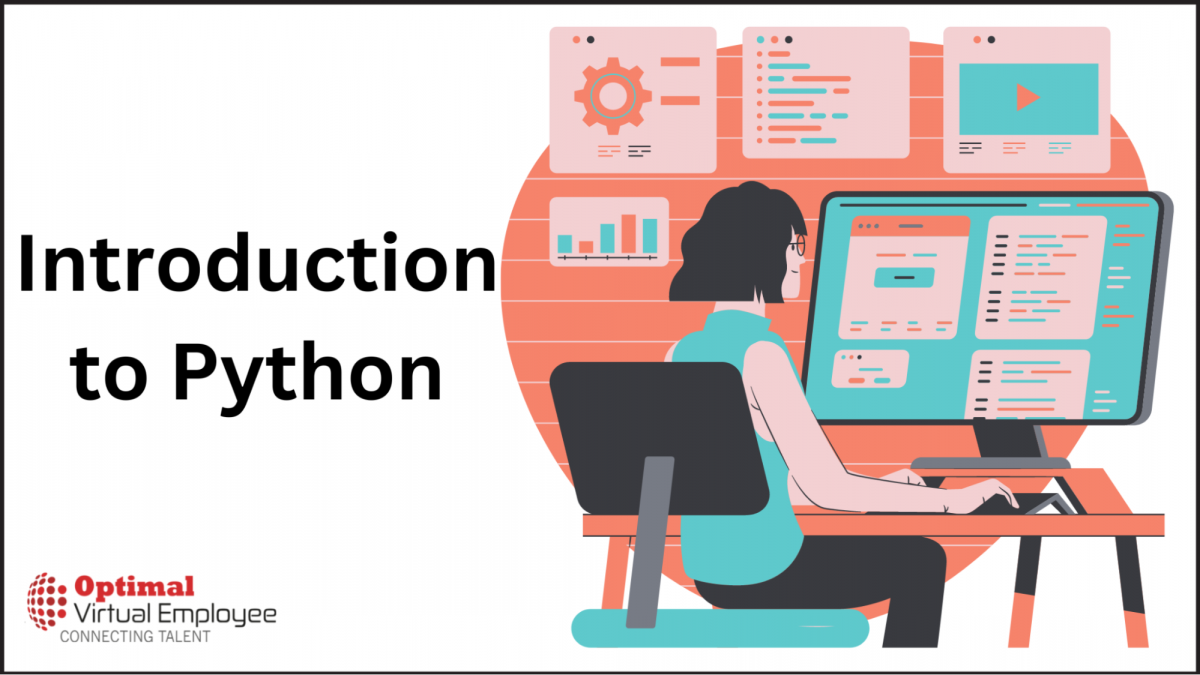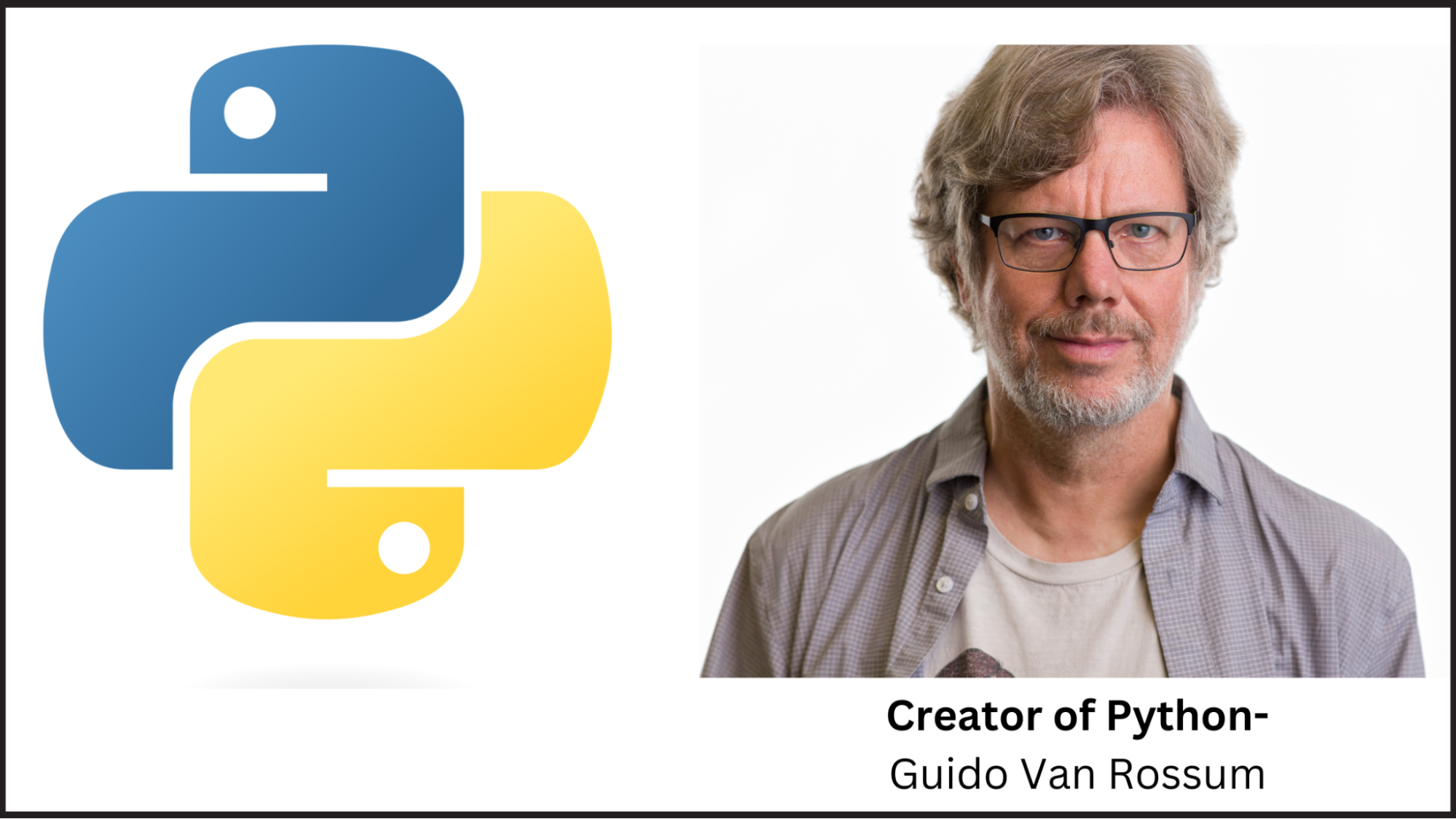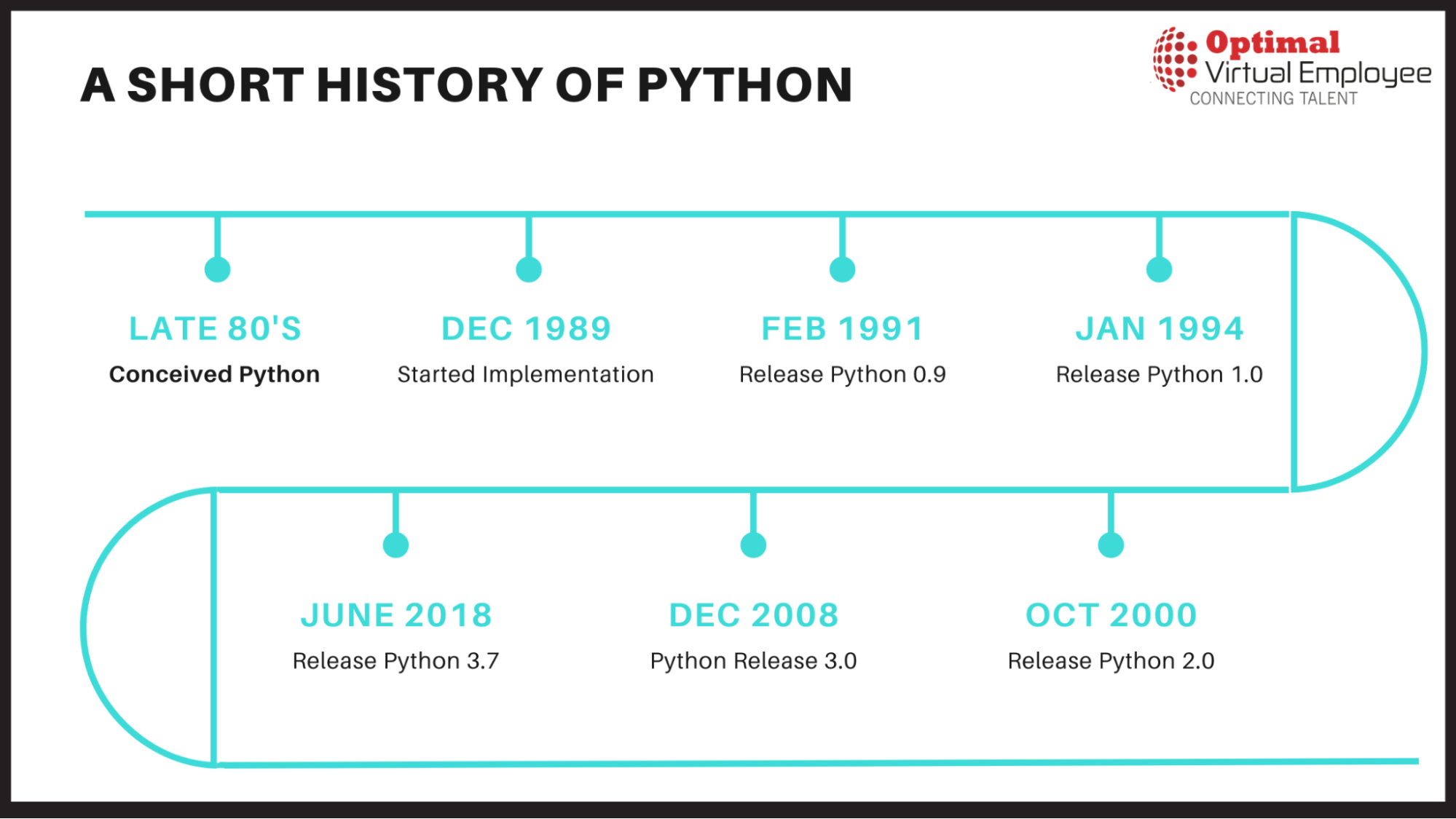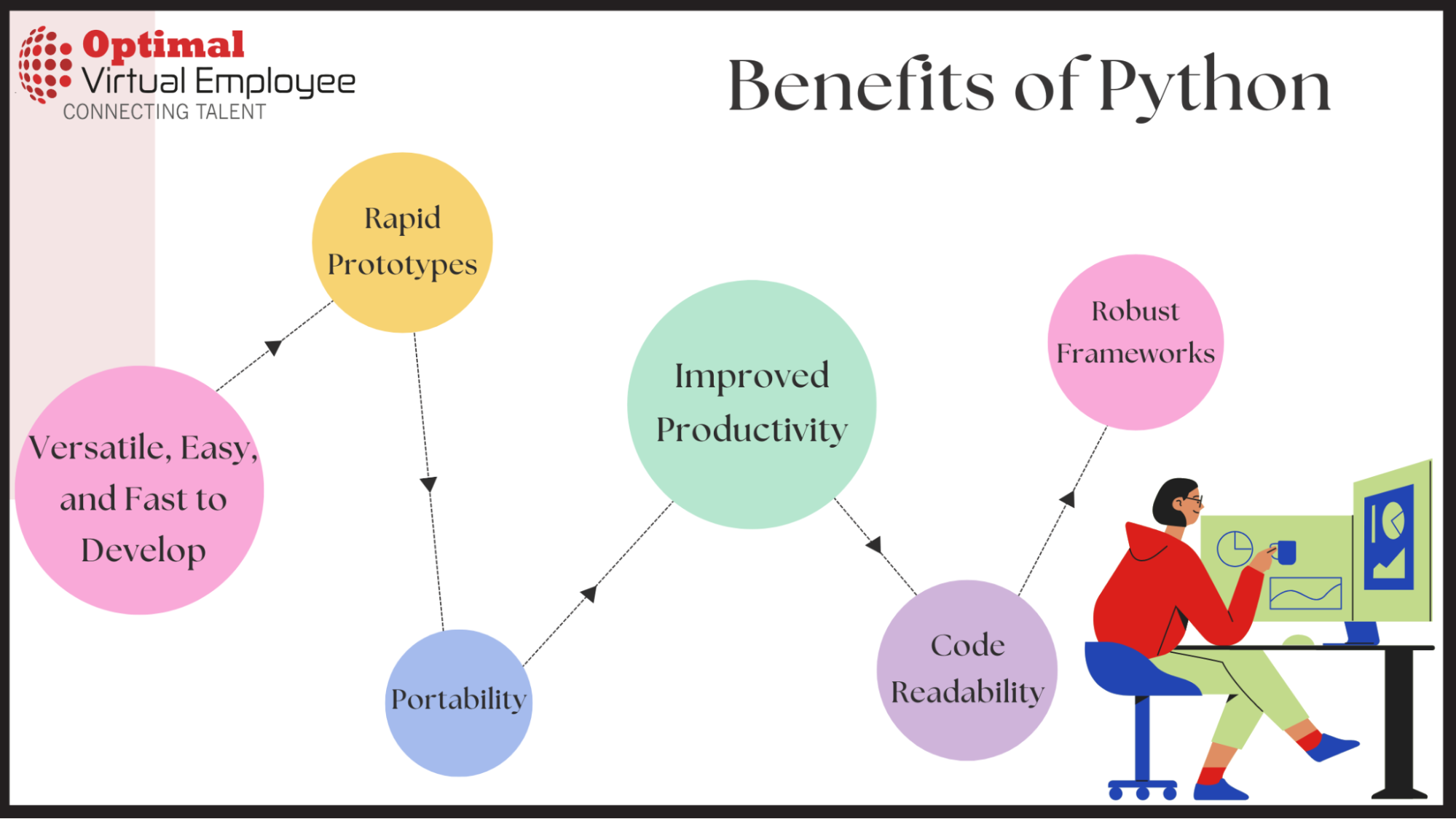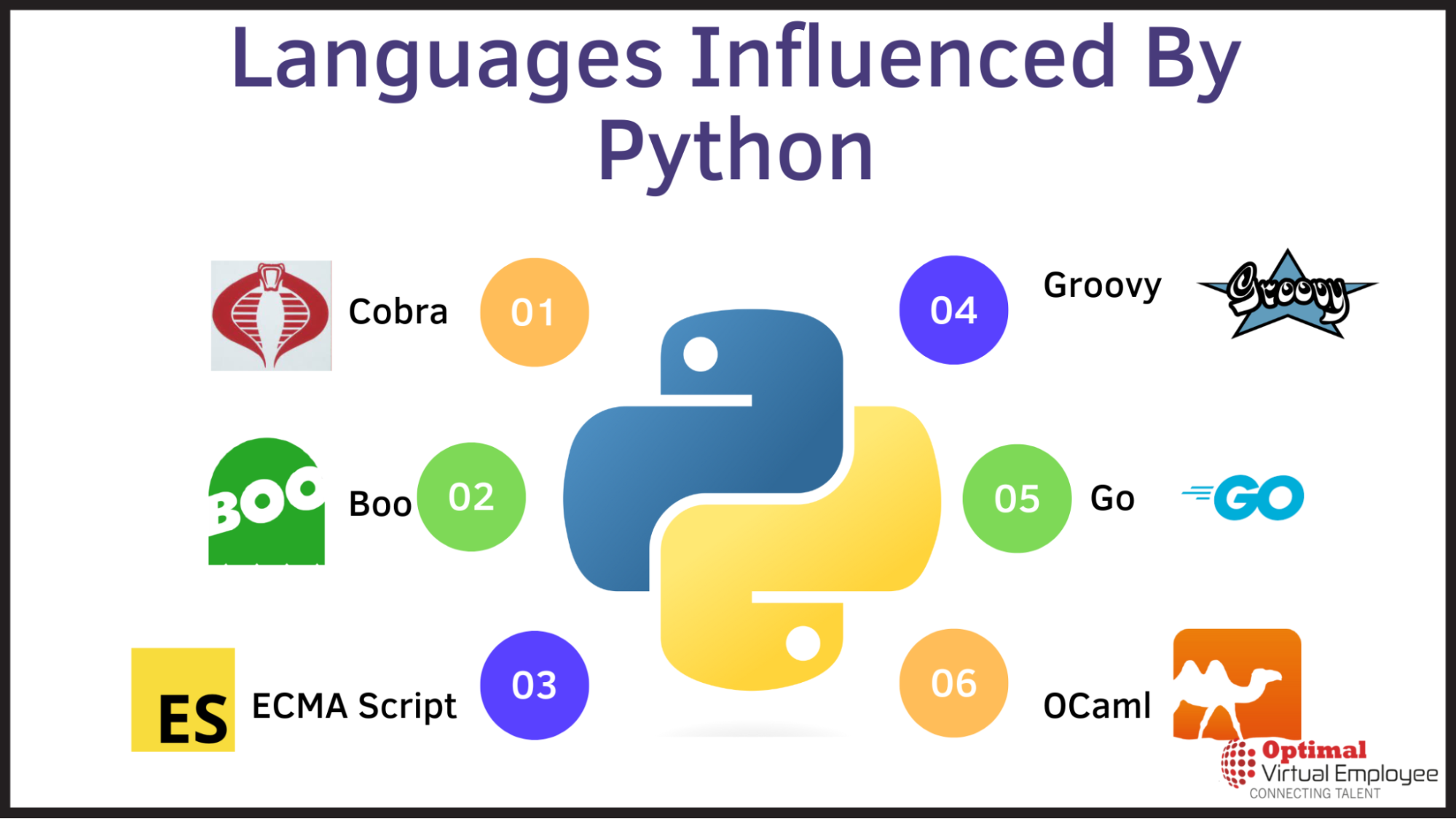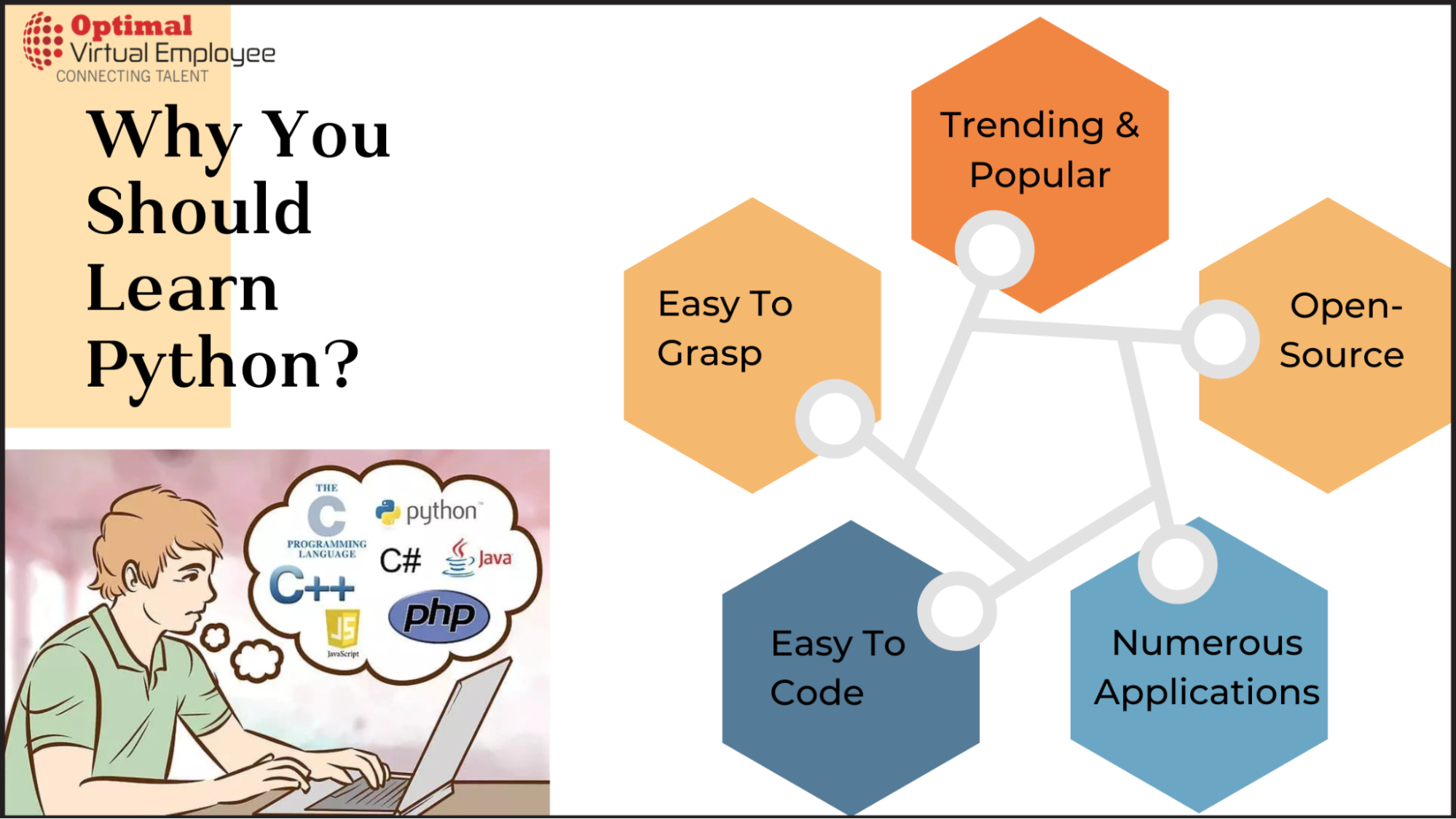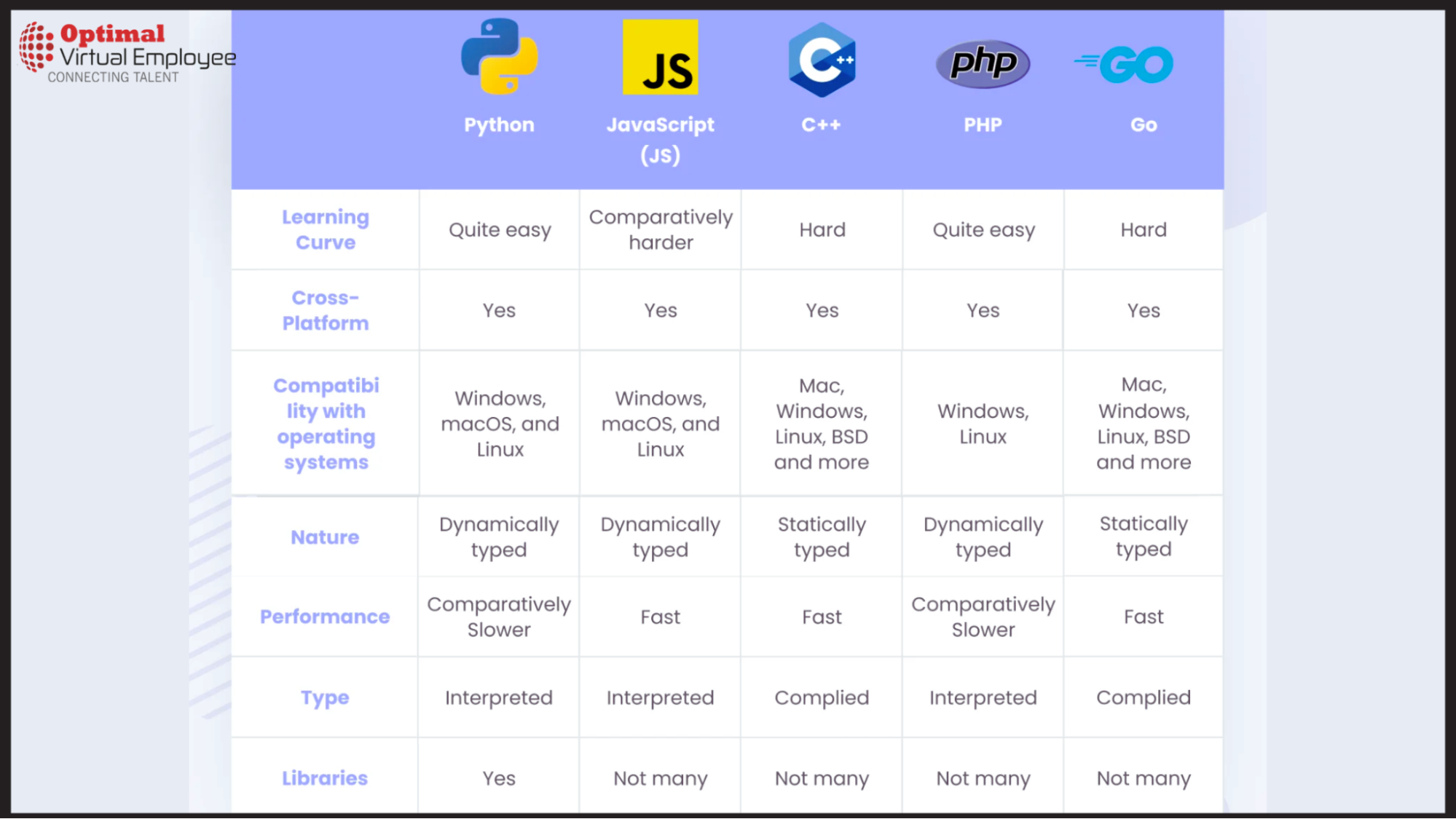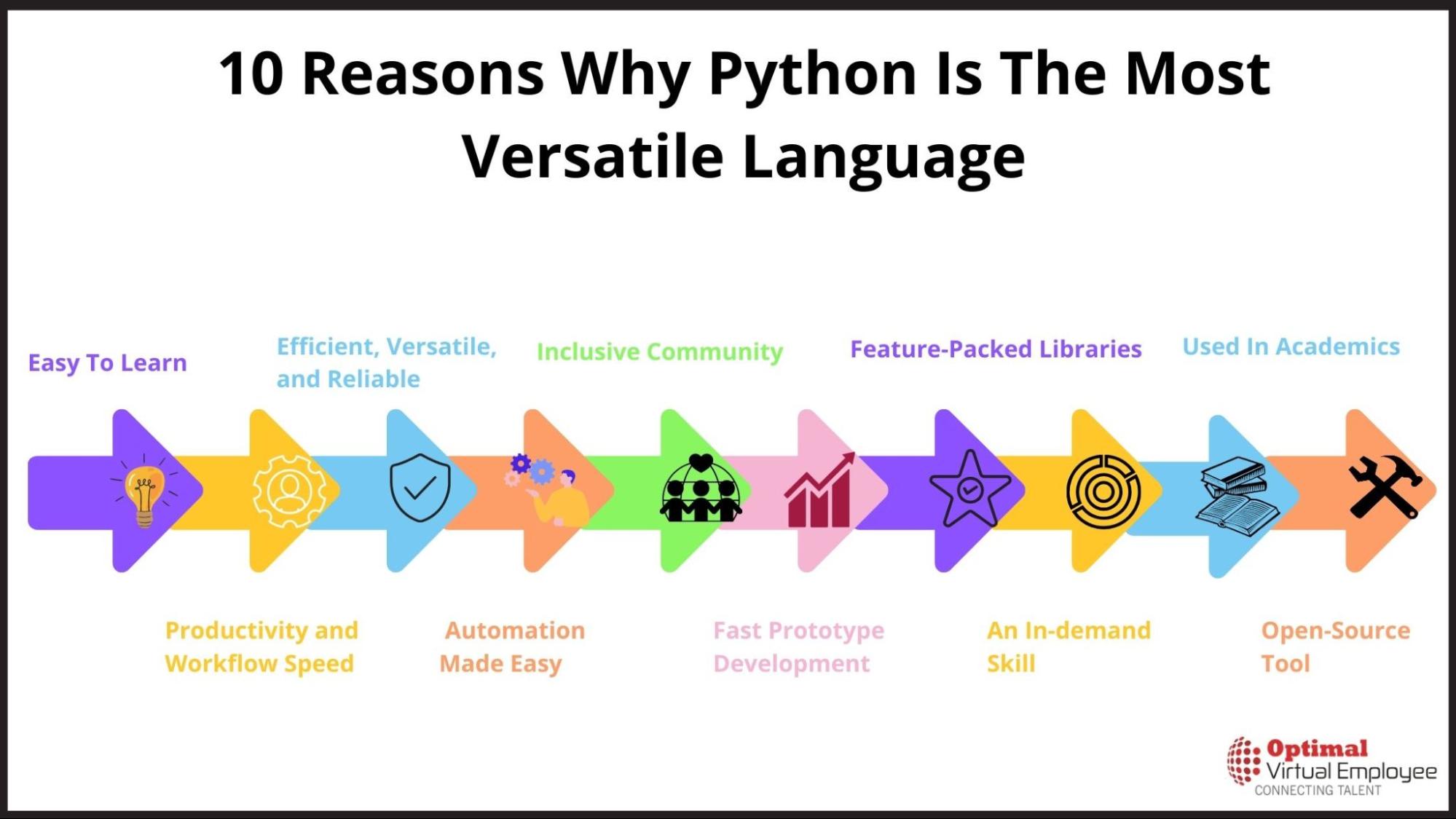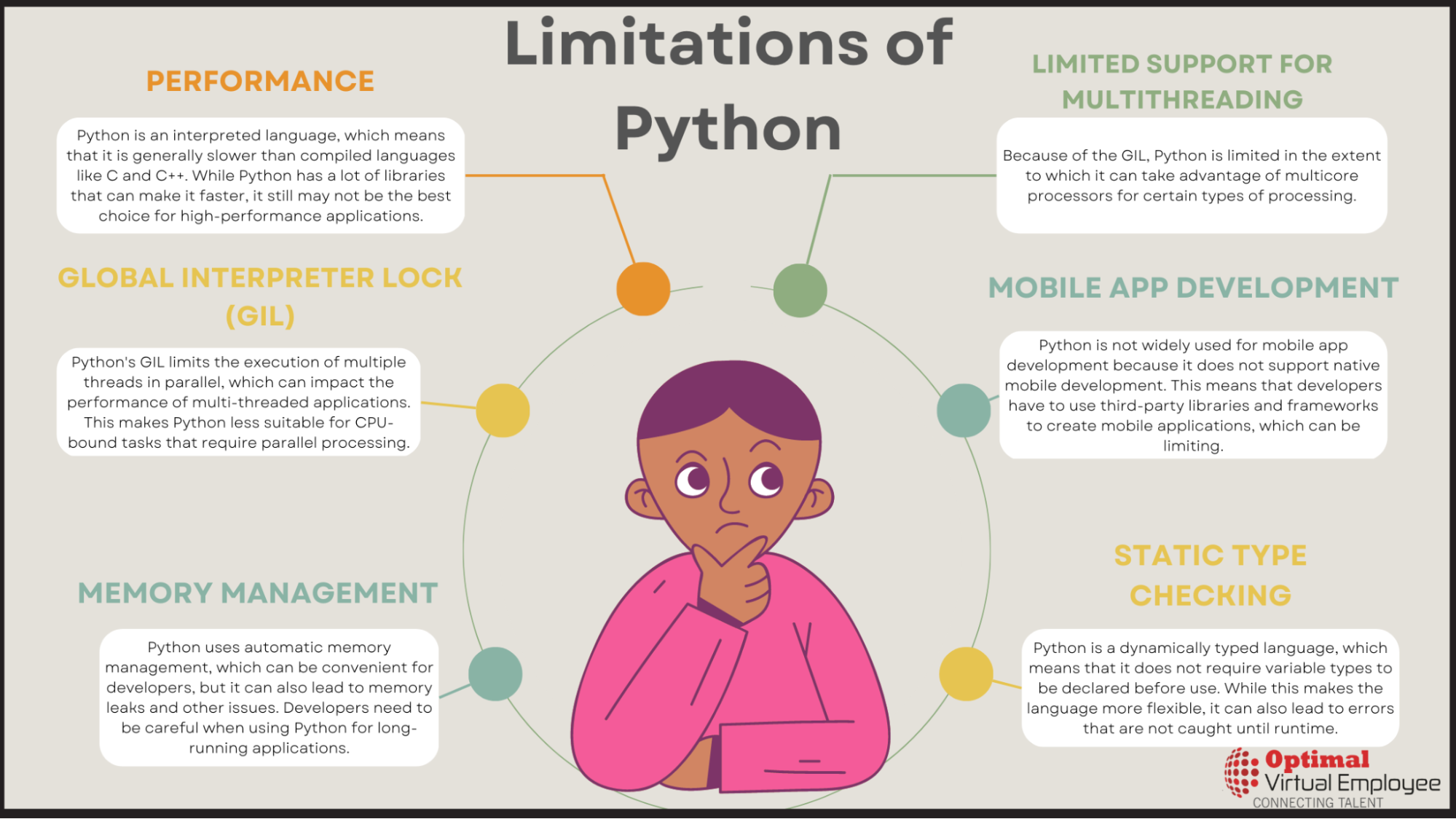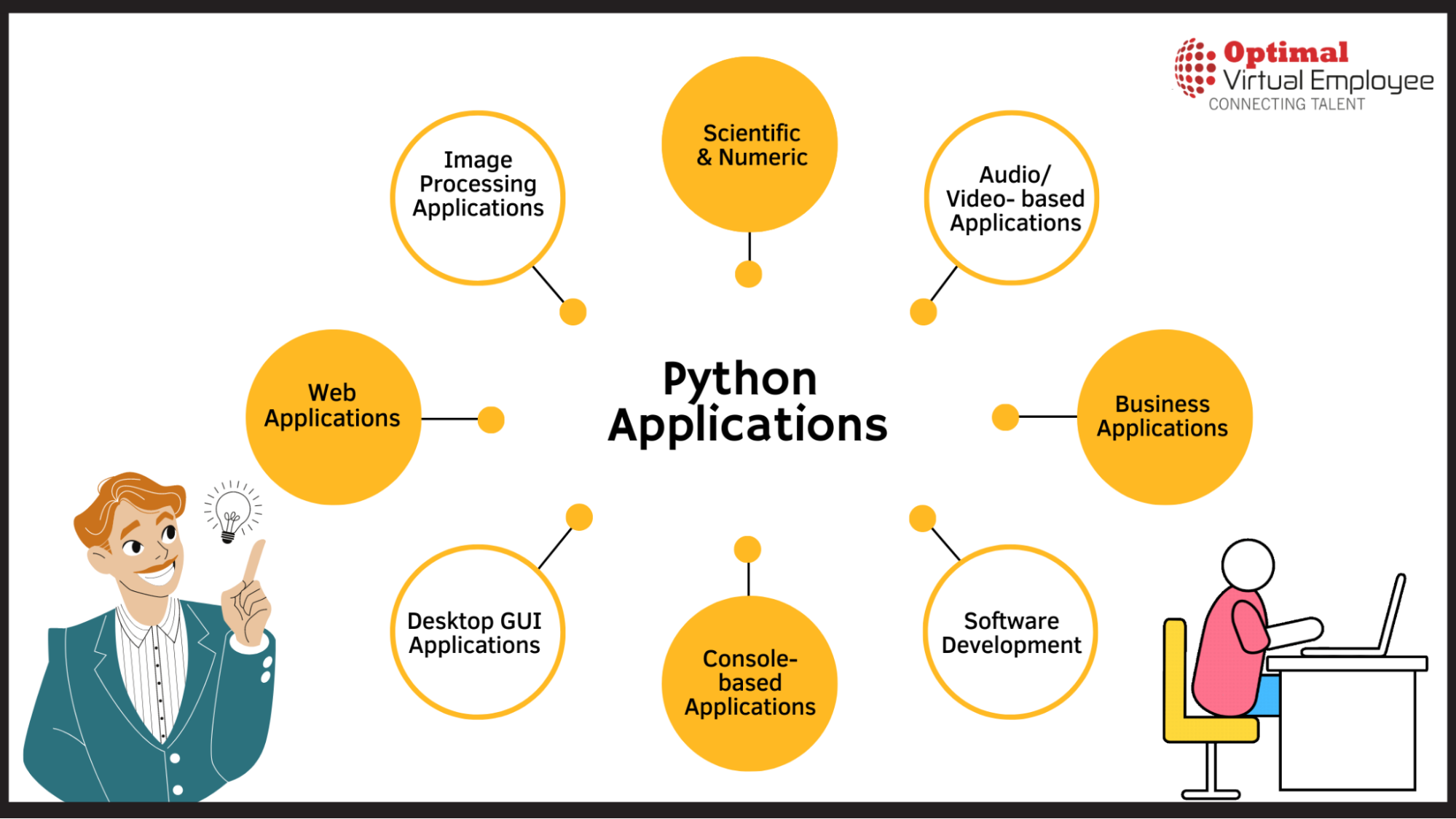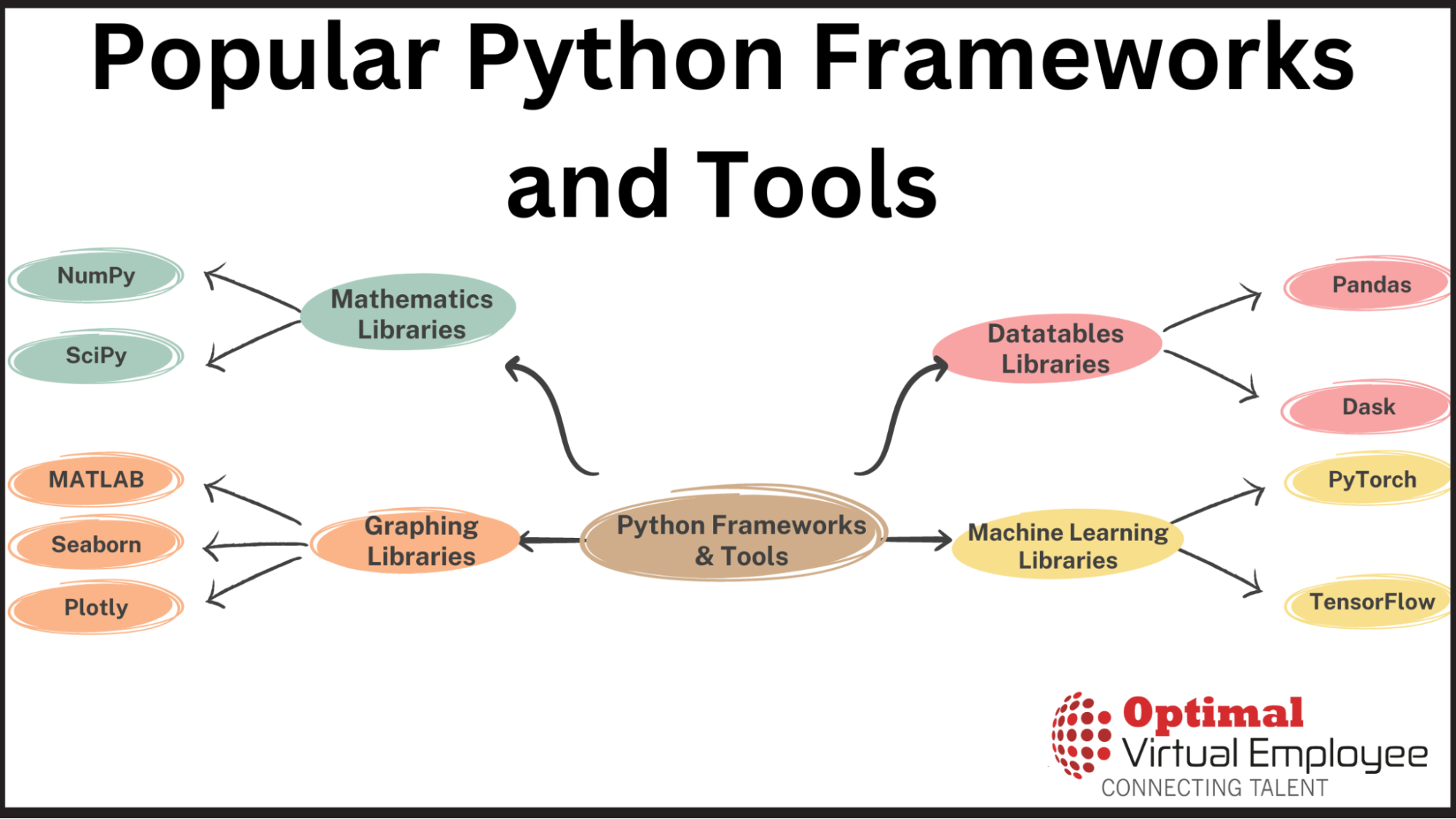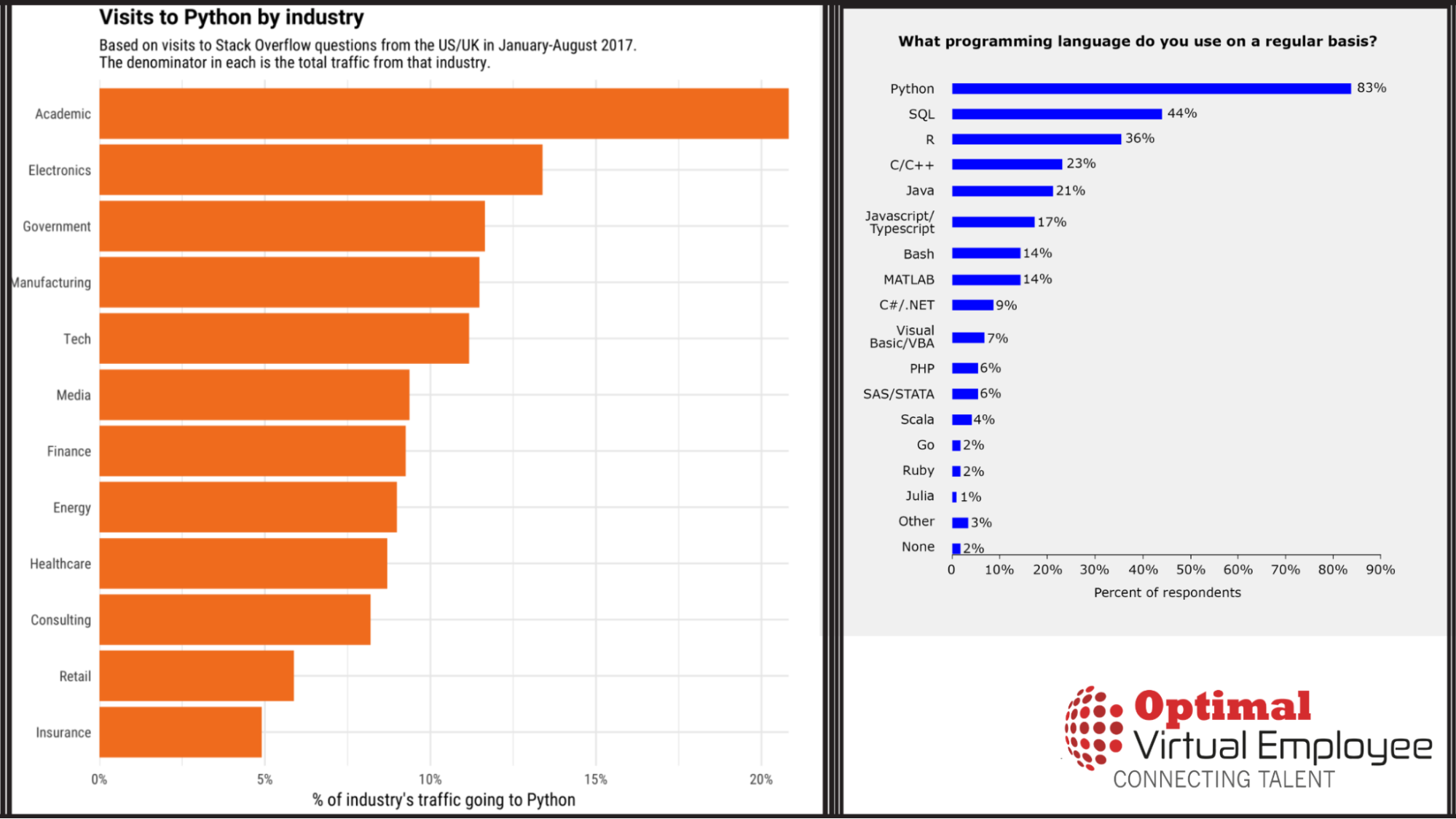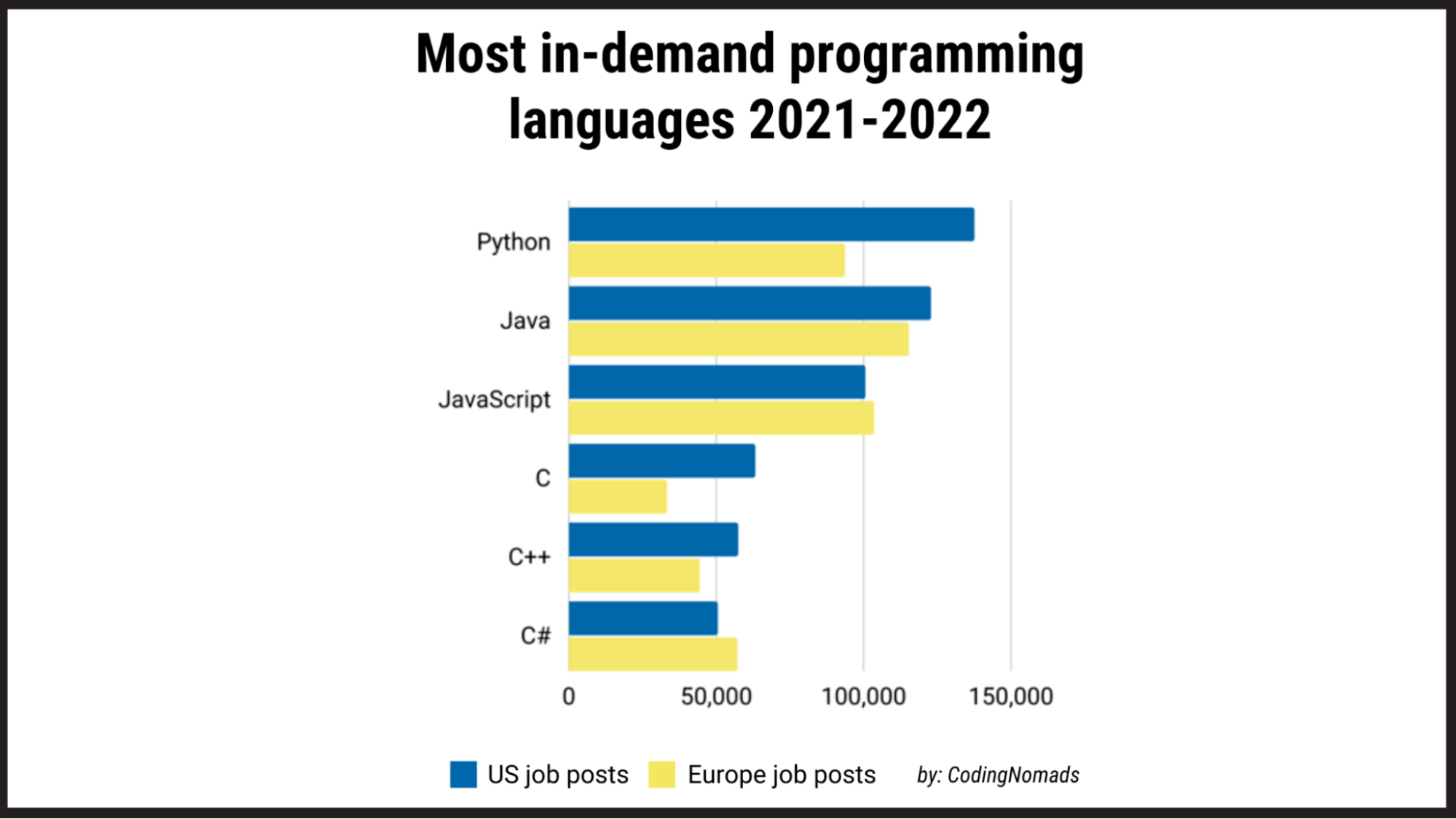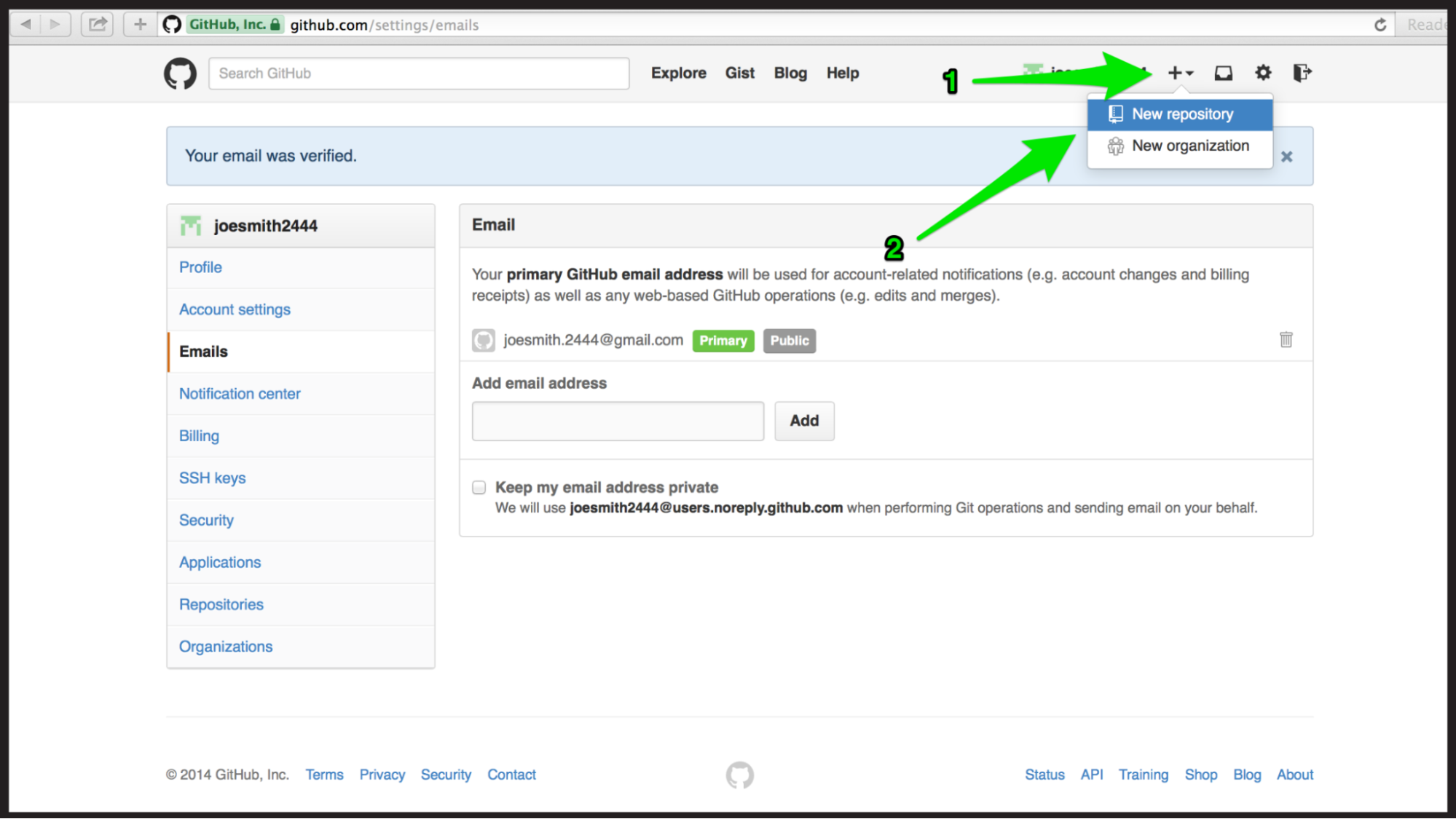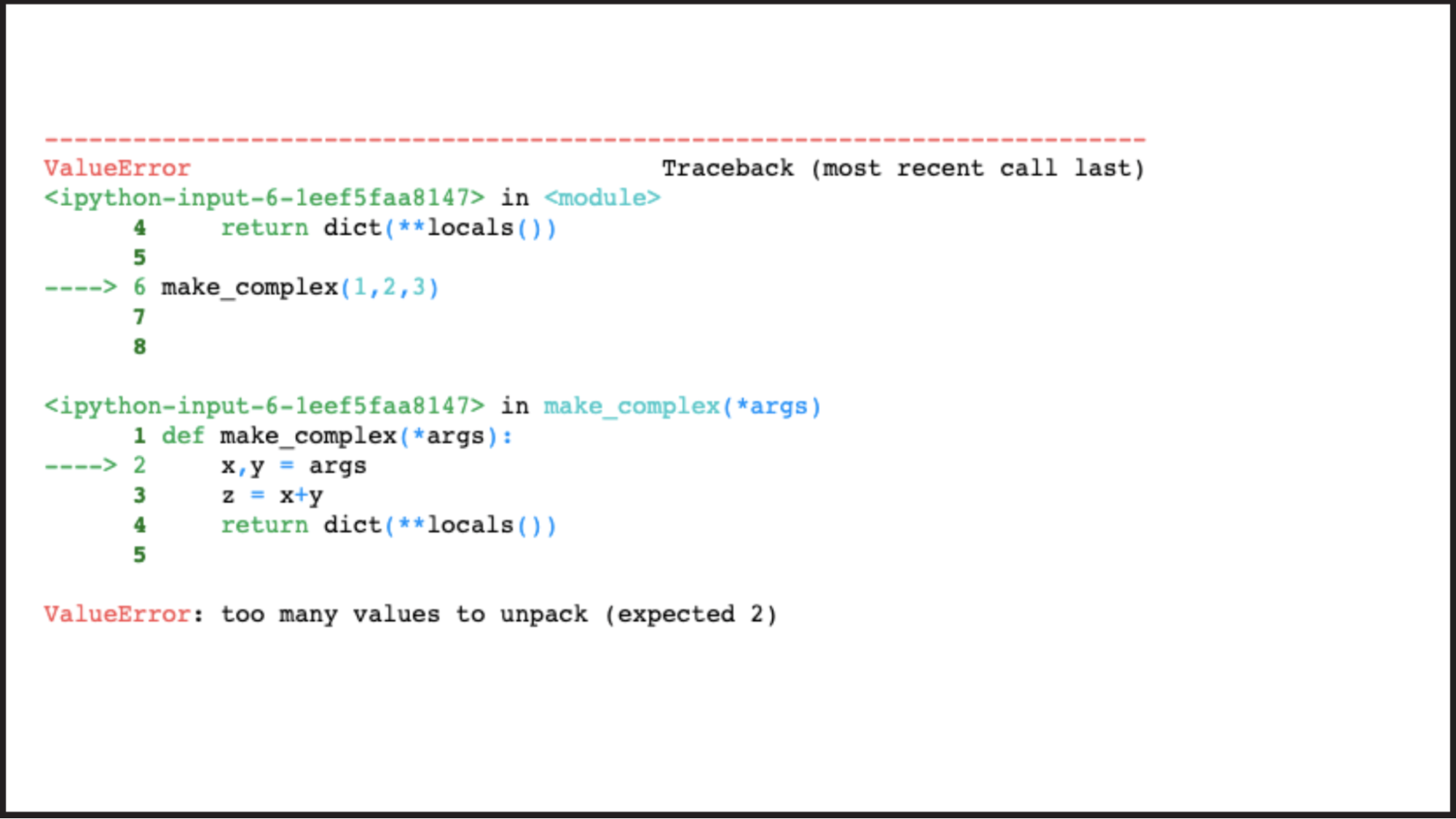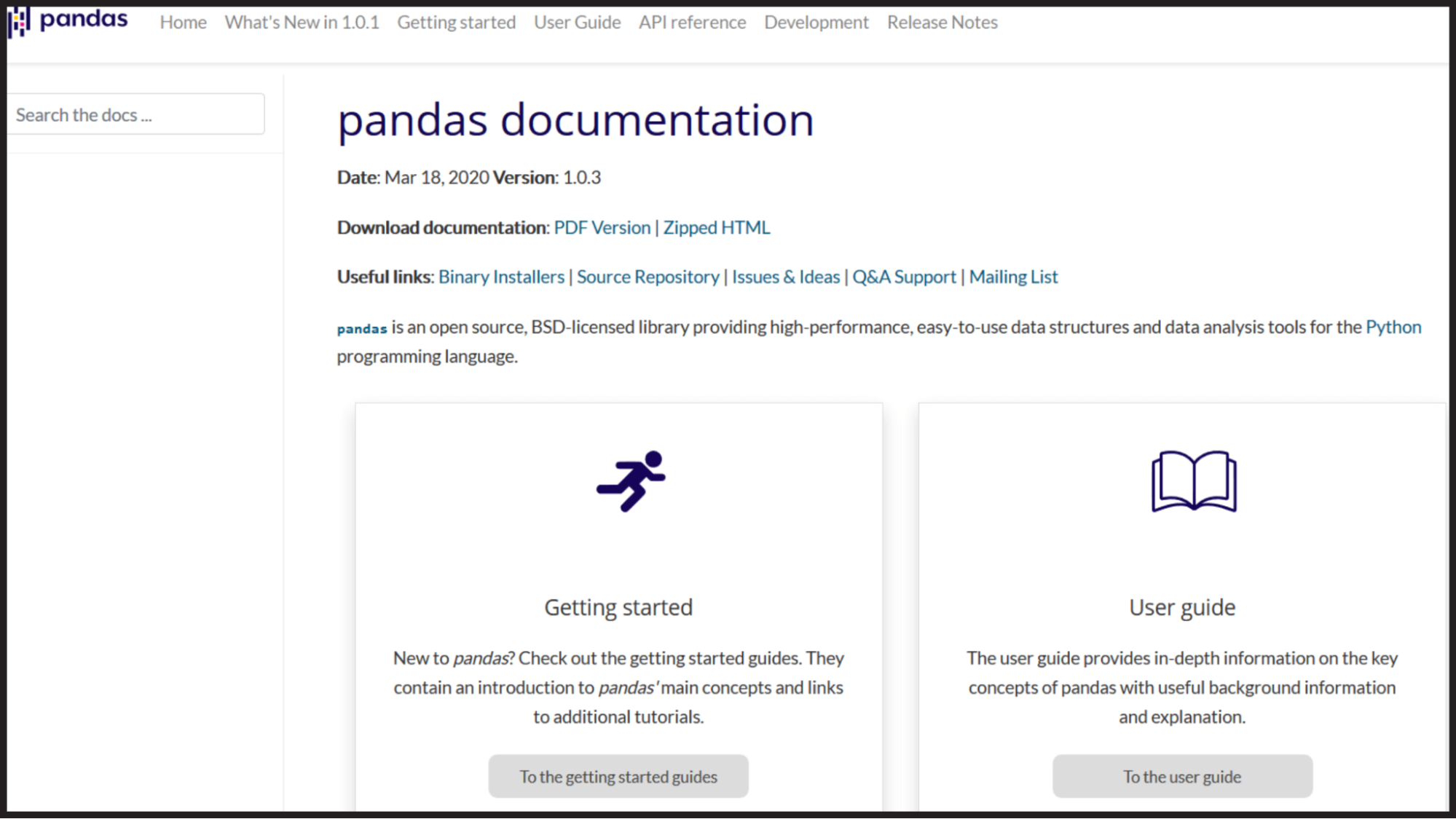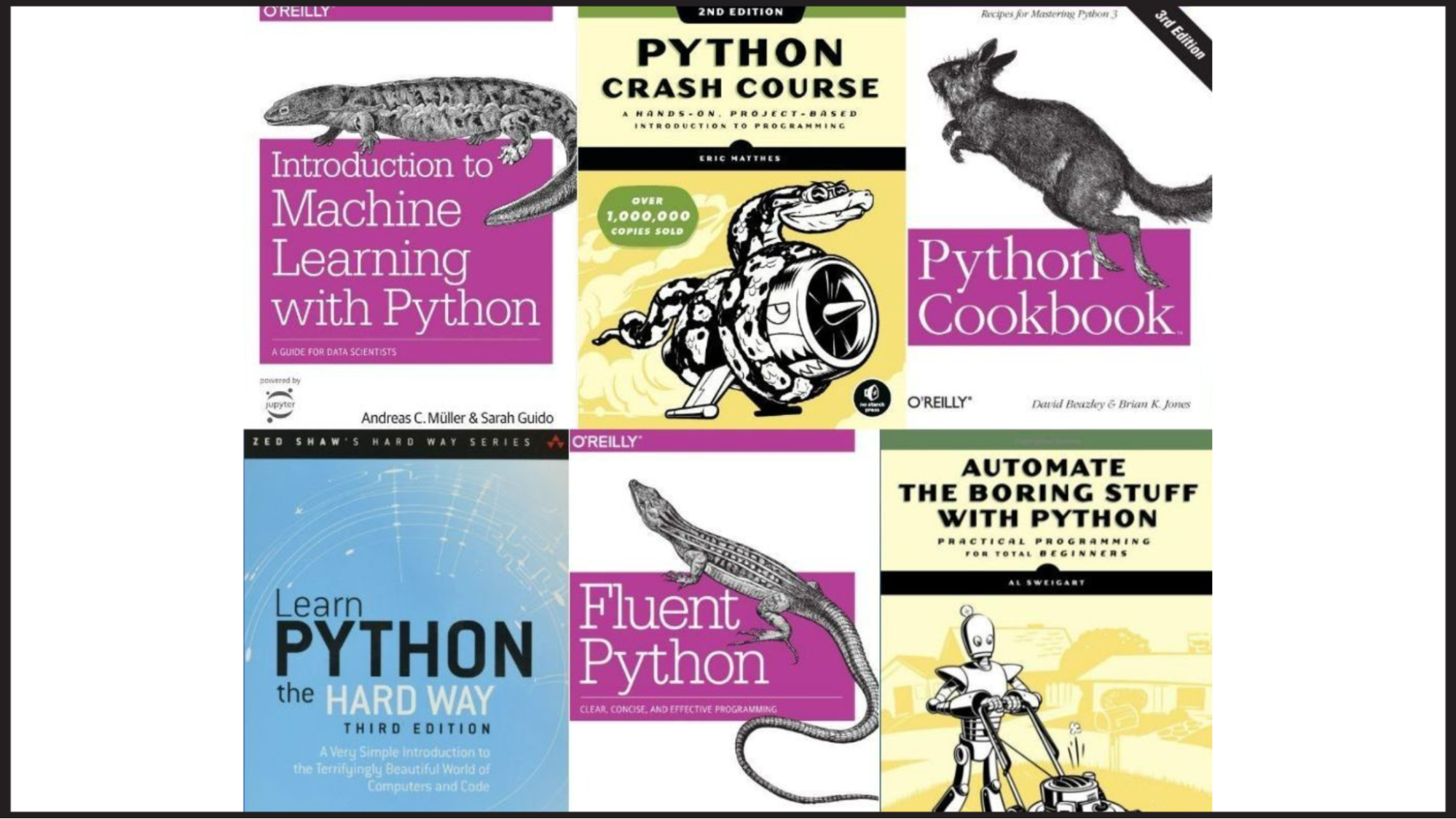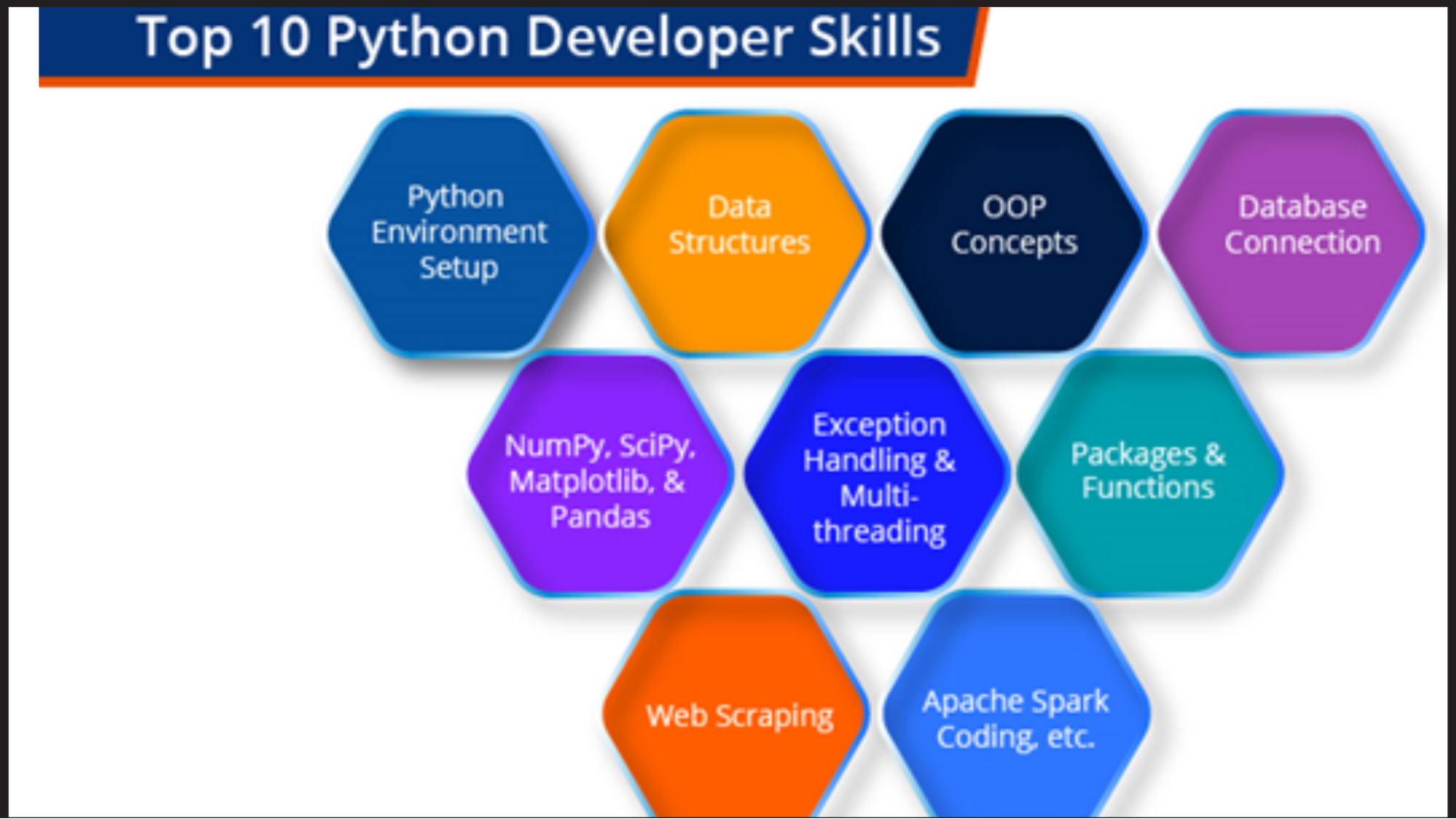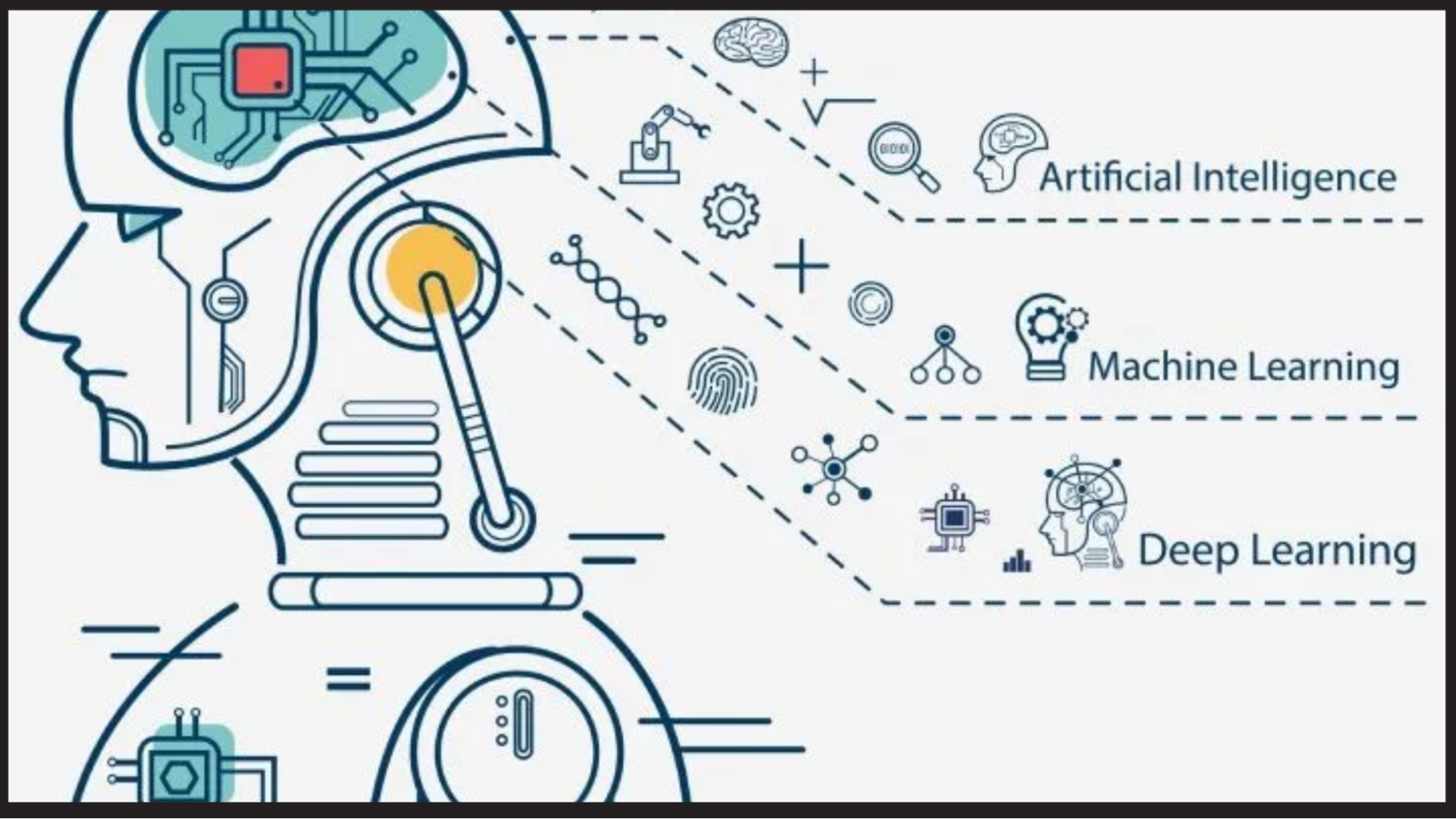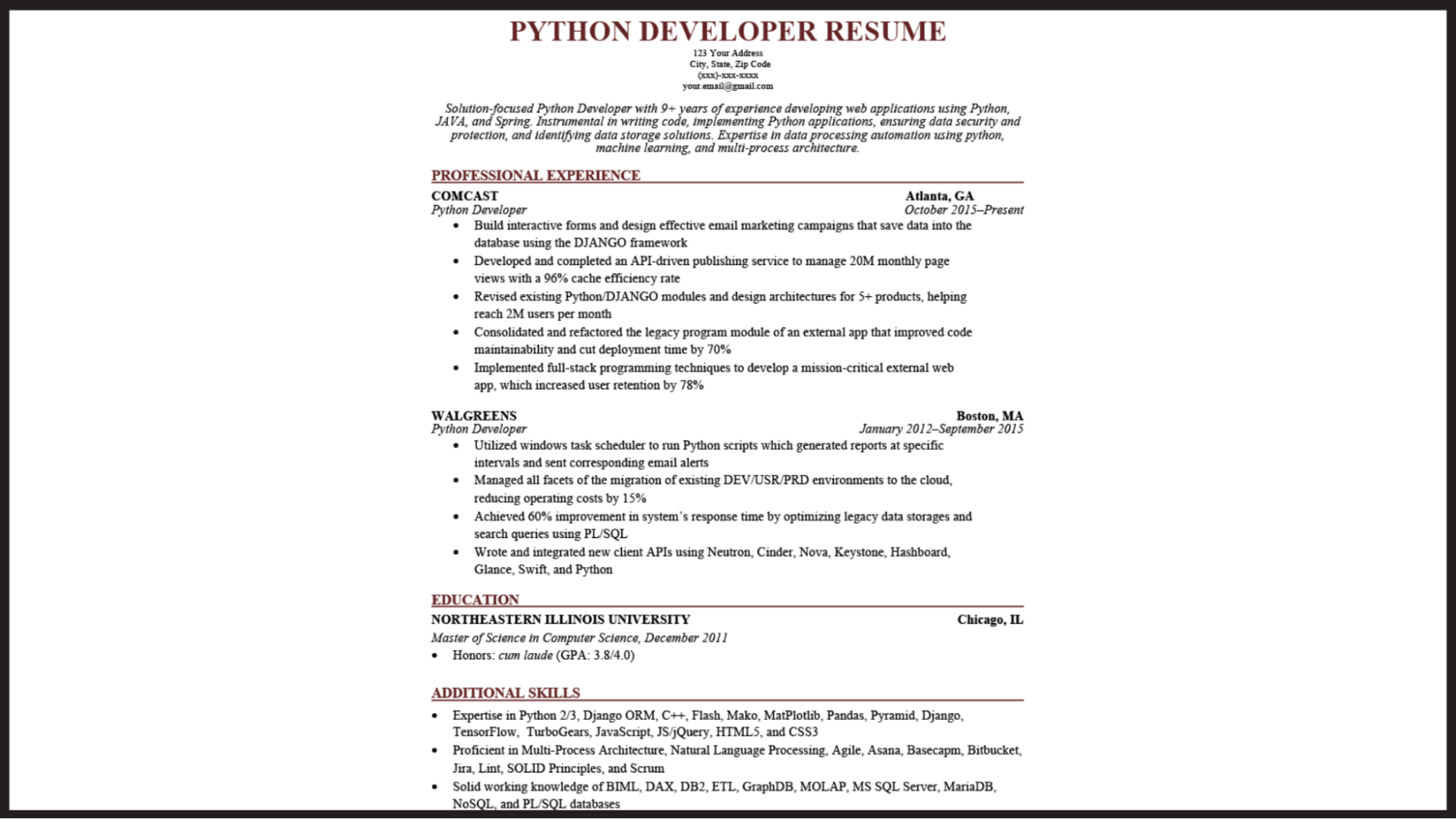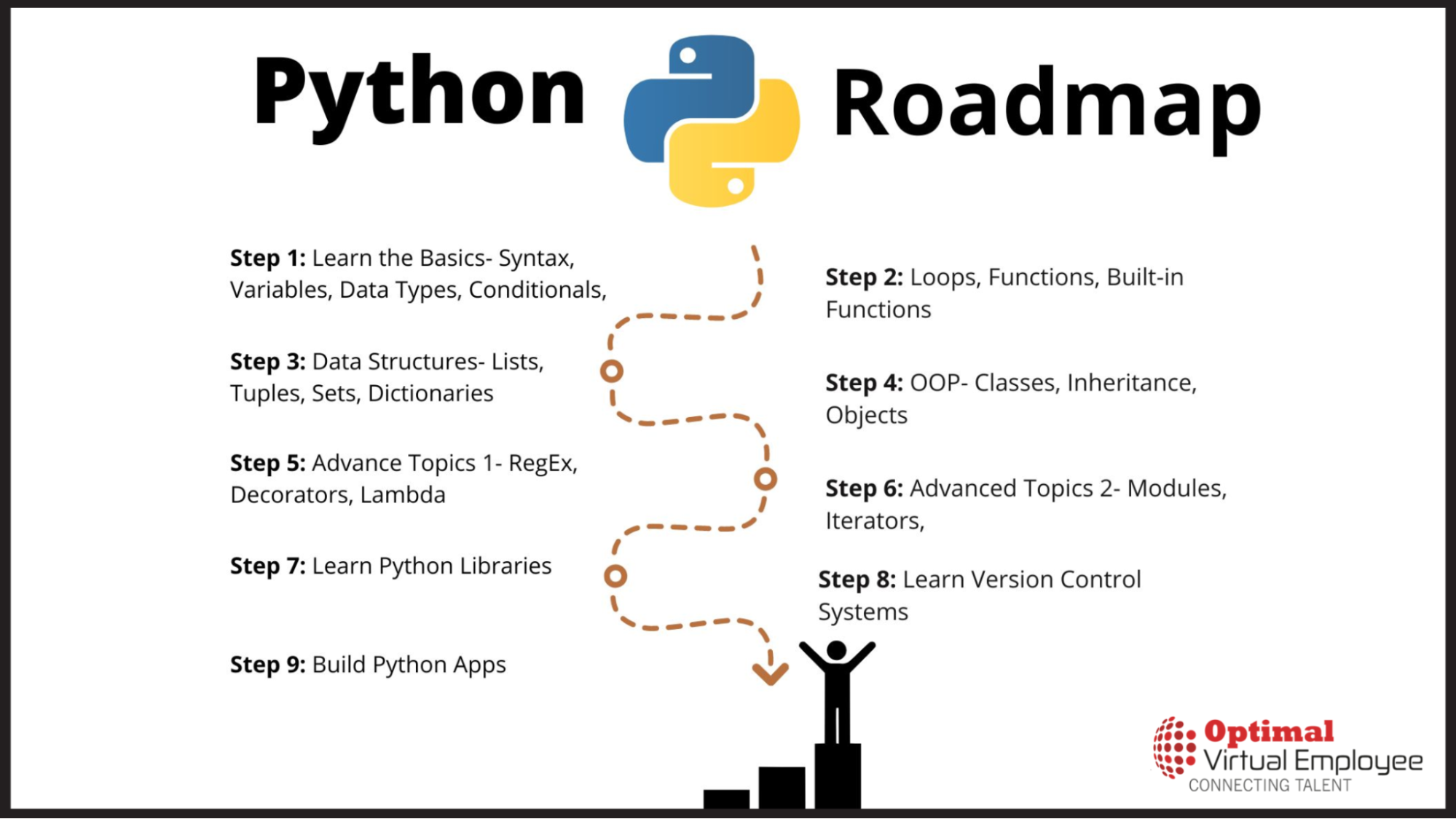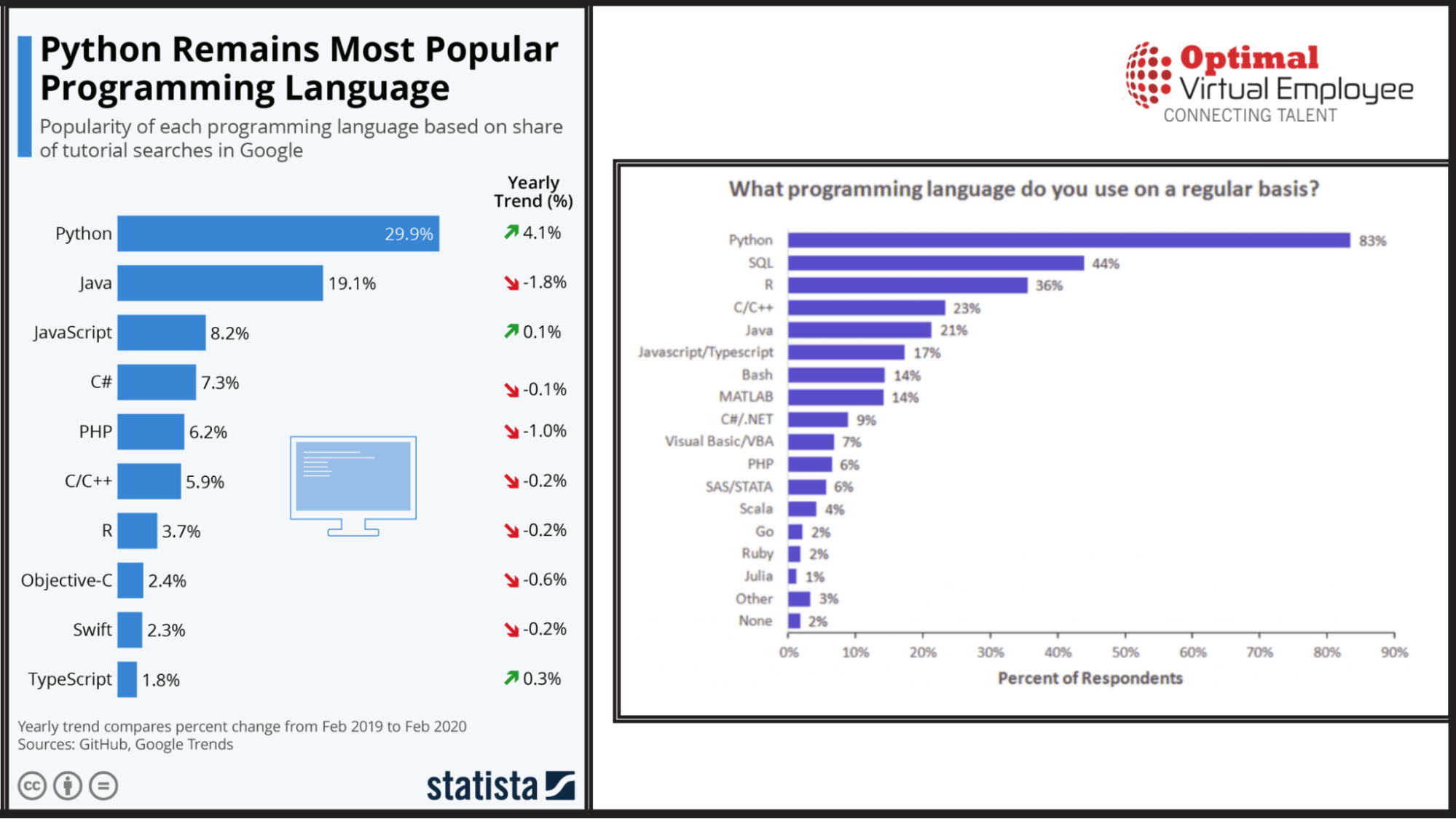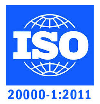Python has become one of the most popular programming languages in recent years. It can be used for everything from machine learning to building websites and testing software.
Among the most popular programming languages in the world, Python is used to create Netflix’s recommendation algorithm and self-driving car software. Python is a general-purpose language, which means it can be used in various applications, such as data science, software development, automation, and general development.
Here’s what Python is, what it can do, and how you can start learning it.
What is Python?

Did you know? The name Python comes from Monty Python. When Guido van Rossum created Python, he read the scripts from BBC’s Monty Python’s Flying Circus. He thought the name Python was appropriately short and slightly mysterious.
History of Python
The Python programming language was designed by Guido van Rossum in 1991 and developed by the Python Software Foundation and is widely used as a general-purpose, high-level programming language. Programmers can express concepts in fewer lines of code because of its syntax, which emphasizes code readability.
In the late 1980s, history was about to be made. At that time, Guido Van Rossum started working on a hobby project at Centrum Wiskunde & Informatica (CWI) in the Netherlands which would eventually be known as Python, an application-based programming language. Thanks to its predecessor – ABC Programming Language- this new language was a success. The idea was to keep all the good features of ABC but resolve any complaints and flaws while adding a bit of syntax. His choice of name, inspired by ‘Monty Python’s Flying Circus,’ was short and unique – Python! Until 2018, he held the position of “Benevolent dictator for life” (BDFL). When he resigned from this role, Guido joined Google but is currently employed by Dropbox.
When it was finally released in 1991, it used less code than Java, C++, and C to express concepts. It also had a good design philosophy. The main objective of the language is to make code more readable and to increase developer productivity. It could provide classes with inheritance, several core data types, exception handling, and functions when released.
There is a lot of competition between Python 2.x & 3.x, and both seem to have quite a few different fan bases.
In addition to developing, scripting, generating, and testing software, this language is used for various purposes. In addition to Dropbox, Google, Quora, Mozilla, Hewlett-Packard, Qualcomm, IBM, and Cisco, Python has been implemented because of its elegance and simplicity.
Benefits Of Using Python

Versatile, Easy, and Fast to Develop
It is easy to use and write, has versatile applications, and is based on English syntax.
Open Source with Wide Community Support
Many tutorials, guides, courses, and development forums are available to help you get started.
Robust Frameworks and Libraries
Python is a well-established and widely-used language with robust frameworks and well-maintained libraries to simplify development for various software needs, such as websites, games, AI, and machine learning.
Rapid Prototypes
Python is a simple, object-oriented language with well-supported libraries, which enables rapid prototyping.
Improved Productivity
Its large community, well-developed support materials, and the presence of many frameworks and libraries make Python a dynamic scripting language, not one you must build from scratch.
Portability
Almost any computer or operating system can run Python.
Code Readability
As a result of Python’s simple syntax, it is easy to read and review code, which streamlines bug fixing.
Automatic Memory Management
When objects are no longer needed, Python uses automatic memory management methods to free excess memory.
Languages Influenced By Python
Python’s philosophy and design have influenced a wide range of programming languages, such as:
– Cobra, this language uses indentation and similar syntax—the Cobra’s – Acknowledgements – document listed Python first among all other languages which influenced it. However, the Cobra supports unit tests, design-by-contract, and optional static typing.
– Boo, this language uses indentation, a similar syntax, and a similar object model. However, Boo uses static typing, like optional duck typing, closely integrated with .NET Framework.
– ECMAScript, this language borrowed Python’s generators, iterators, and list comprehensions.
– Groovy, this language was motivated by the desire to bring the Python design philosophy to Java.
– Go, this language is described as incorporating the “development speed of working in a dynamic language such as Python.”
– OCaml, this language has an optional syntax called The Whitespace Thing (TWT), inspired by Python and Haskell.
Why Should You Learn Python?
Most people recommend learning Python, but they rarely explain what makes it so versatile. Here are some reasons why you should learn Python as your first programming language:
Easy to Grasp
Designed to be easy to learn, Python is a beginner-friendly language with easy syntax, readable code, and a supportive community to assist with questions.
Numerous Applications
Python is for you if you want to learn one language to enter many fields. It has various applications in many different areas, such as Data Science, Web Development, rapid application development, and much more. Having an introduction to Python, you will have the experience of working in different fields with just one language.
Easy to Code
There is a lot of confusion surrounding programming languages, but what if there was a way to achieve the same result with fewer lines of code? That’s possible with Python, which allows you to write programs in fewer lines of code than most programming languages.
Job Demand
There is a huge demand for Python developers as most online infrastructure is shifting to Python, making it one of the most popular programming languages.
Highly Portable
Python code can indeed run on any device, and Python programs, since they are platform-independent, can be transferred from one platform to another without modification.
Open-sourced & Free
Python is free to use since it is open-source software developed by many developers worldwide, and its source code is publicly available.
Trending and Popularity
Undoubtedly, Python is trending and one of the most popular programming languages in the world.
Why Python Is Better Than Other Languages
Python is much more similar to human language than other programming languages. It is a fast, easy-to-use, easy-to-deploy programming language that can be used to build scalable web applications. The readability of Python’s code makes it better than other programming languages. For a person who wants to enter the world of programming, Python can serve as a highly beginner-friendly programming language.
Why do intermediate and expert programmers prefer Python? Python is so versatile that it can be used for various tasks, such as automating machines, devising machine learning algorithms, and analyzing data. Python is used to build web applications like YouTube and Instagram.
10 Reasons Why Python Is The Most Versatile Language
Let’s discuss some of the advantages of Python programming language over other programming languages now that we know why Python is better than other languages:
Beginner-Friendly Code Syntax [Easy To Learn]
There are many reasons why Python is so popular these days, including its easy-to-learn code syntax, which was designed as a general-purpose programming language for beginners. It can seem overwhelming to start in the field of programming. It is best to begin with, an easy programming language to make things easier for a beginner in such a situation.
Moreover, Python’s code readability is one of the best since it’s a high-level language that is almost close to human language. This is helpful when amateur developers read and debug the code.
Efficient, Versatile, and Reliable
These days, software developers and engineers need a faster development time, which is why Python is so important. Python can be used on various platforms and systems without performance loss, so it is more reliable than most modern programming languages.
Because Python is one of the oldest programming languages, it is widely used for software development and deployment. You should choose Python programming language if you wish to work with just one language for various types of software development, games, or even artificial intelligence/machine learning.
Inclusive Community and Awesome Resources
For a programming language to gain traction, it must have an inclusive developer community that provides help and support. Python has the most supportive global developer community.
No programmer knows everything. No matter your level of programming, you need to spend time on Google looking for answers to language-specific issues. After 30 years, Python has a wealth of documentation for unforeseen problems. Moreover, Python has a large community of developers, which allows you to network with like-minded people and presents a solution to various issues.
Feature-Packed Libraries and Frameworks
The best thing about programming is that things get repeated, and you don’t have to code everything from scratch. When developing software, some code gets repeated over and over again. Libraries and frameworks can help you avoid repeating yourself in this situation.
You can use the Python standard library to add a feature or functionality to your project next time you want to add quality or functionality.
Used In Academics
As a result of its popularity, Python has applications in most major industries. In recent years, Python has proven to be the go-to programming language in most, if not all, academic courses. Since Python developers were in high demand, Python instructors were also in high demand. This led to an increase in Python courses and boot camps being offered.
With many built-in functions, Python increases the speed of Web Development projects, which is why expert Web Developers prefer it.
Productivity and Workflow Speed
In large-scale projects, productivity and workflow speed plays a significant role. What’s the point of making a web application if you can’t launch it to meet market demand? Python, as always, has a lead in software deployment. Python is an easy programming language with its clean object-oriented design and strong integration.
Even though different languages solve different problems, Python stands out as one of the most versatile programming languages. Having Python knowledge in a team of developers helps keep everyone on the same page. This supports the workflow as a whole.
Automation Made Easy
Today almost every industry is automating its tedious tasks to save time. The less time you spend launching revolutionary software, the more likely you will capture the market.
Python offers various tools, modules, and libraries for automating repetitive tasks.
Developers use Python because it’s easier to write automation scripts than other languages.
Fast Prototype Development
To build scalable web applications, you must first test them on a small scale. Python is a fast and easy language to use, so it is easy to create a prototype within a matter of days. The Python programming language is packed with excellent frameworks and libraries, making it easy for beginners to create simple web applications that scale as they go.
A system of internet-connected devices communicating without human intervention is the Internet of Things (IoT), in which Python is also used. The standard language for developing scalable projects in the IoT is Python.
An In-demand Skill with Growth Opportunities
The simplicity of Python’s code is why it has become so popular as a programming language. Many major companies, such as Netflix and Google, use Python. Consequently, Python developer roles are in high demand. Furthermore, these job profiles allow developers to earn a high salary with less experience.
As major tech companies hire Python developers more than other programming languages, the average salary of Python developers indicates that the industry is universally adopting Python.
Open-Source Tool
Under an OSI-approved open-source license, Python is freely usable for commercial use and whose source code is contributed by highly skilled developers worldwide. In addition to making Python development free, this ensures an inclusive global community and readily available solutions to Python-specific issues.
Limitations of Python
Like any programming language, Python has its limitations. Here are some of them:
Performance: Python is an interpreted language, making it slower than compiled languages such as C, C++, and Java. Although there are ways to optimize Python code, it may not be suitable for computationally intensive tasks or real-time applications.
Global Interpreter Lock (GIL): Python’s GIL restricts the interpreter to execute only one thread at a time. This means that even on multi-core systems, only one core can execute Python code, limiting the performance of multithreaded Python applications.
Mobile Development: Although Python can be used for mobile development, it may not be the best choice. This is because mobile operating systems such as Android and iOS use native languages such as Java and Swift, respectively, making it challenging to develop mobile applications using Python.
Type Checking: Python is a dynamically typed language, meaning variables are not assigned a specific data type until runtime. While this makes Python code more flexible, it can also lead to runtime errors that could have been detected at compile time.
Packaging and Dependency Management: Python has multiple packaging and dependency management tools, making it confusing for beginners to choose the right one. This can also cause issues with version conflicts between different packages.
Security: Python is an open-source language, meaning its code is available to anyone to view and modify. This can lead to security vulnerabilities if malicious code is introduced.
Despite these limitations, Python remains a popular programming language due to its ease of use, versatility, and extensive community support.
Apps built with Python

Instagram: Instagram is a popular photo and video-sharing social media app made using Python, Django, and PostgreSQL.
Spotify: Spotify is a music streaming app built using Python, Django, and Cassandra.
YouTube: YouTube is a video-sharing platform built using Python and JavaScript.
Dropbox: Dropbox is a cloud storage and file-sharing app built using Python.
Reddit: Reddit is a social news and discussion website built using Python and Django.
Quora: Quora is a question-and-answer website built using Python and Django.
BitTorrent: BitTorrent is a peer-to-peer file-sharing protocol built using Python.
Pinterest: Pinterest is a social media platform built using Python and Django for visual content sharing.
SurveyMonkey: SurveyMonkey is a survey tool built using Python.
PyCharm: PyCharm is an integrated development environment (IDE) for Python built using Python itself.
These are just a few examples, and Python is also used extensively in scientific computing, data analysis, machine learning, and artificial intelligence applications.
Applications Of Python Programming
We now live in a digital age driven by code. Software is used extensively; no industry is free of its effects, whether healthcare, military, banking, or research. Many programming languages help to develop software, and Python has emerged as one of the more lucrative and attractive ones. Surveys show that over 80% of developers favor Python because it offers excellent libraries and frameworks that speed up development processes.
Machine learning, data science, and artificial intelligence have all been revolutionized by Python. Furthermore, it provides ease in building various applications, web development processes, and more. This blog will look at ten of the most commonly used Python applications in the real world.
Web Development
It is one of the most astonishing applications of Python. Python comes up with a wide range of frameworks like Django, Flask, Bottle, and many more that make it easy for developers to develop websites. Additionally, Python has inbuilt libraries and tools that make web development a breeze. The use of Python for web development also offers the following:
– Amazing visualization
– Convenience in development
– Enhanced security
– Fast development process
-
Artificial Intelligence and Machine Learning
With its inbuilt libraries and tools, Python facilitates the development of AI and ML algorithms. Machine Learning and Artificial Intelligence are hot subjects right now. The code is also simple, concise, and readable, making it easier for developers to write complex algorithms and provide a flexible flow. Some of the inbuilt libraries and tools that enhance AI and ML processes are:
– Numpy for complex data analysis
– Keras for Machine learning
– SciPy for technical computing
– Seaborn for data visualization
Data Science
Data science revolves around gathering, sorting, analyzing, and visualizing data. Python is beneficial for handling statistics and complex mathematics. In addition, pre-built libraries make the process easier for professionals in this field. Some of the most well-known libraries for optimizing data models, preparing data, and conducting complex analysis are TensorFlow, Pandas, and Socket learning – all forming an environment that allows users to fine-tune these functions.
-
Game Development
Python has proved to be an excellent option for game development in the rapidly growing gaming industry. Various functionalities and add-ons are developed using Python programming in popular games like Pirates of the Caribbean, Bridge Commander, and Battlefield 2. Several popular 2D and 3D game development libraries are available, including pygame, panda3D, and cocos2D.
-
Audio & Visual Applications
Python has many tools and libraries to help you accomplish your tasks perfectly. Popular applications like Netflix, Spotify, and YouTube have been coded in Python. This can be handled by libraries like:
– Dejavu
– Pyo
– Mingus
– SciPy
– OpenCV
CAD Applications
CAD, which stands for computer-aided design, is the industry standard for creating 3D and 2D digital models. It has rendered manual drifts obsolete and is widely used by architects, product designers, and construction managers to create items of the utmost precision. Python’s many applications, such as Blender, FreeCAD, and open cascade, offer various features such as technical drawing, dynamic system modeling, recordings, file export, and import.
Business Applications
You can build high-performance business applications with excellent security and scalability features with Python. The language includes libraries and tools such as:
– Odoo is business management software that provides an automated solution for your business process.
– Tryton is easy-to-use open-source business software. It has fully integrated features like financial accounting, sales, CRM, purchasing, shipping, etc.
These features make it ideal for creating business applications.
Desktop GUI
With Python, developers can quickly and efficiently build GUIs using an interactive programming language. To make a fully functional GUI in a highly secure and efficient manner, it includes an extensive list of inbuilt tools such as PyQT, Kivy, wxWidgets, and many others.
Web Scrapping Applications
In web scraping, information is extracted from websites more easily and quickly than ever before. Researchers, organizations, and analysts use the information for various purposes. Python has many features that make it suitable for scraping, some of which are:
– A concise syntax enhances readability and saves you time.
– A wide range of libraries and tools like pandas, matplotlib, and Selenium makes the web scraping process easy and efficient.
– Easy to use and understand
Python can also be used in the following real-world applications:
– Robotics and automation use inbuilt libraries and tools like PyDy, Dart, PyRobot, and pyro.
– Image processing: some of the amazing libraries and tools for image processing are Blender, OpenCV, Houdini, and PIL.
– Popular libraries like Pandas, Matplotlib, SciPy, and many more facilitate scientific applications.
Python developers can use ready-made components in a framework to save time and money and accelerate time-to-market. Python has a broad scope of frameworks, libraries, and tools for developers.
There are two types of Python frameworks – full-stack frameworks and non-full-stack frameworks. The full-stack Python frameworks support developers from the user interface to the back-end data storage. In contrast, a non-full stack framework is a lightweight (under 5k) framework that does just one thing (but does it well).
Here are 11 of the most popular Python frameworks and Python libraries, organized by their strengths:
Mathematics Libraries
There are several popular math libraries for Python that supply more advanced math functions than the standard built-in Python Math Library.
NumPy
NumPy provides math functions for arrays, matrices, and functions that operate on arrays.
SciPy
SciPy is a free, open-source library of modules for optimization, linear algebra, integration, interpolation, and various other math, science, and engineering functions.
Graphing Libraries
Data visualization libraries assist in the development of various kinds of interactive, visually-appealing graphs.
MATLAB
MATLAB is another scripting language, but its computational engine can be accessed in Python. MATLAB provides numeric computing as well as options to visualize data.
Seaborn
A wrapper over matplotlib, Seaborn specializes in being simple and offering powerful visualizations.
Plotly
Known for creating interactive plots and sophisticated charts, it can be accessed from Python or on its own independent online platform.
Datatables Libraries
Datatables support the manipulation of tabular datasets, an essential element to speed up computing or build parallel computing systems.
Pandas
Pandas is a fast, lightweight tool for data analysis and modeling.
Dask
A comprehensive library that works in parallel with NumPy and Pandas, known for advanced parallelism for analytics.
Machine Learning Libraries
Data science is evolving, moving far beyond basic data tables into advanced artificial intelligence (AI) and machine learning (ML). There are an extensive number of ML libraries for Python due to the simplicity of the language, the top three being:
PyTorch
PyTorch is based on Torch, a Facebook ML library for C wrapped in Lua, but is now used by many big brands, including Twitter. PyTorch supports computations, modeling, graphing, and ML concepts such as deep learning, NLP, Computer Vision, and many more.
TensorFlow
Developed by Google, TensorFlow is now an open-source library for computations and graphs and serves as a framework for creating neural networks and deep learning.
Websites, Web Apps, and APIs
There are many popular Python web frameworks, but the two most popular are:
Flask
Accessible under the BSD license, Flask is more of a “micro-framework” (not full stack), providing flexibility to developers to choose the tools, databases, and extensions to support a variety of functionalities.
Django
Free, open-source, full-stack framework to develop complex code and apps quickly. Django is considered one of the top Python frameworks.
Is Python Worth Learning in 2023 and beyond?

Are Python Developers in Demand?

The following are some of the reasons why top companies such as Google, Netflix, Spotify, and Pinterest use Python for backend services:
– Python is known for its simplicity and technology compared to Ruby.
– Python programming language is more dynamic than Java.
– Machine learning projects work better with Python.
– Python is more readable and flexible than PHP.
– The low development cost of Python makes it popular among startups.
– Python, unlike C, has a short history but is rapidly becoming a dominant language.
As a result of these characteristics, Python programming attracted the attention of many developers, who chose it as their first learning language. Python developers now have a large community around them as a result of being the top first choice and breaking the index to reach number one. Employers are eager to hire Python developers as the language grows in popularity.
Data analysis and machine learning are also possible with Python, making Python developers among India’s highest-paid employees.
Python Developer Job Description
Essentially, a Python developer is a person who designs, codes, and redistributes development projects written in the Python programming language. They are also responsible for locating and fixing errors.
– Scripting design
– Assistance for automation deployment
– Web frameworks for the new codes
– Data review
– Grazing the internet
– Constructing back-end components to connect
As a Web developers, Python developers work on server-side web applications. In short, they are the creators, managers, and destroyers of Python projects.
How to Become a Python Developer?
Tip 1: Build Your GitHub Repository
You can use your GitHub repository as your resume when interviewing for a Python developer position. Recruiters can view it on the developer platform instead of having to send zip files with samples of your work.
Make sure you add your Python projects to your GitHub repository, even if it is only a simple piece of code you wrote or an existing code that you modified.
Tip 2: Write Readable Code
While this may seem obvious, it bears mentioning nonetheless. When writing code, it’s imperative that others can read and understand it. After all, if recruiters will be viewing your code on GitHub, they’ll need to know what you’ve done.

– Indentation
– Tabs and spaces
– Maximum line length
– Line breaks
– Blank lines
– Source file encoding
– String quotes
– White spaces in expressions
– Trailing commas
– Naming conventions
Tip 3: Create Proper Documentation
Your GitHub repository should include a README file. The README file should contain introductory information regarding your project: what it does, what libraries are used, and so forth.
Readers who wish to learn from your code or implement it differently should read the README file.
Tip 4: Read Other People’s Code Around Your Skill Level
One of the best ways to develop your coding style is to learn from other Python developers. Many people on GitHub have unique and organized coding styles. To get an idea of different styles, look at other codes similar to your skill level.
Some of the most popular GitHub developers include Fredrik Lundh, Kenneth Reitz, Armin Ronacher, Raymond Hettinger, Doug Hellmann, and Daniel Roy Greenfeld.
Tip 5: Read books on Python Coding
Even if you’re an experienced Python developer, you’ll find plenty of new material in Python coding books. The more you know, the more confident you’ll be.
Tip 6: Grow Your Python Skillset

– NumPy
– SciPy
– Theano
– Keras
– TensorFlow
While learning all the libraries would be ideal, you can still progress by mastering at least a few. Create projects based on your knowledge of these libraries, and submit them to GitHub. In addition to improving your GitHub repository, you will also be able to retain new knowledge since the best way to remember information is to apply it immediately.
Tip 7: Master AI and Machine Learning with Python
Some of the most crucial Python applications are Artificial Intelligence (AI) and Machine Learning. Learn the algorithms used in these areas and implement projects using them.
Tip 8: Make Open Source Contributions
This practice shows that you are a team player by adding value to existing work by looking up other people’s repositories on GitHub.

Pipenv: Python Development Workflow for Humans.
Statistics: Python scripts to parse your Messenger, Hangouts, and Telegram Chat Logs into DataFrames.
Som-TCP: Solving the Traveling Salesman Problem using Self-Organizing Maps.
Py2bpf: A python to BPF (Berkeley Packet Filter bytecode) converter
Tip 9: Start a Blog and Write about What You Have Learned
You can write about how you started as a beginner, how you got to where you are now as a Python developer, what materials you used to gather information, what projects you worked on, etc., in your blog. Recruiters can quickly learn your coding style by just looking at your profile.
Tip 10: Follow a Daily Schedule for Practice
It doesn’t mean you should stop coding because you have mastered the language. If you want to become a Python developer, you must write code daily to become familiar with every aspect of Python. Write something every day, whether it’s simple code or complex code. The more you use lessons, the better you will retain them.
Tip 11: Keep Your Resume and Profile Updated on Job Portals

Essential Skills a Python Developer Must Have

– Core Python Sound Expertise
– Understanding of Web Frameworks
– Object Relational Mapping (ORM)
– Data Scientists’ Skills
– Analytical Skills with a Solid Understanding of Multi-Process Architecture
– Front-End Development Knowledge
– The capacity for integration
Python Today

Machine learning is another field where Python is essential. Libraries like TensorFlow and Keras make machine learning possible.
With the emergence of data science jobs, Python is becoming more popular. Thanks to its simplicity, Python allows people to learn it quickly, even without prior computer experience.
There is no doubt that Python’s popularity will not wane anytime soon. Its wide application and the great need in the labor market for Python specialists serve as an invitation and motivation to learn it now.
If you are unsure if you want to learn Python, start with the resources at your fingertips. Start on YouTube with some interesting python channels, or listen to python podcasts. If you prefer an old-school approach, get a Python book. Countless options await you.
When you are ready, take an online python course where you can learn and practice with lots of real-world examples and activities.
Conclusion
Python is no doubt the most versatile programming language. With its growing popularity, Python has become the pinnacle choice of developers over other programming languages. It can also serve as a stepping stone for those who want to upskill themselves to enter the digital world. Several technologies can now be developed with Python, including Big Data, AI/ML, Deep Learning, Game Development, and more, due to its rapid evolution in 2023.
